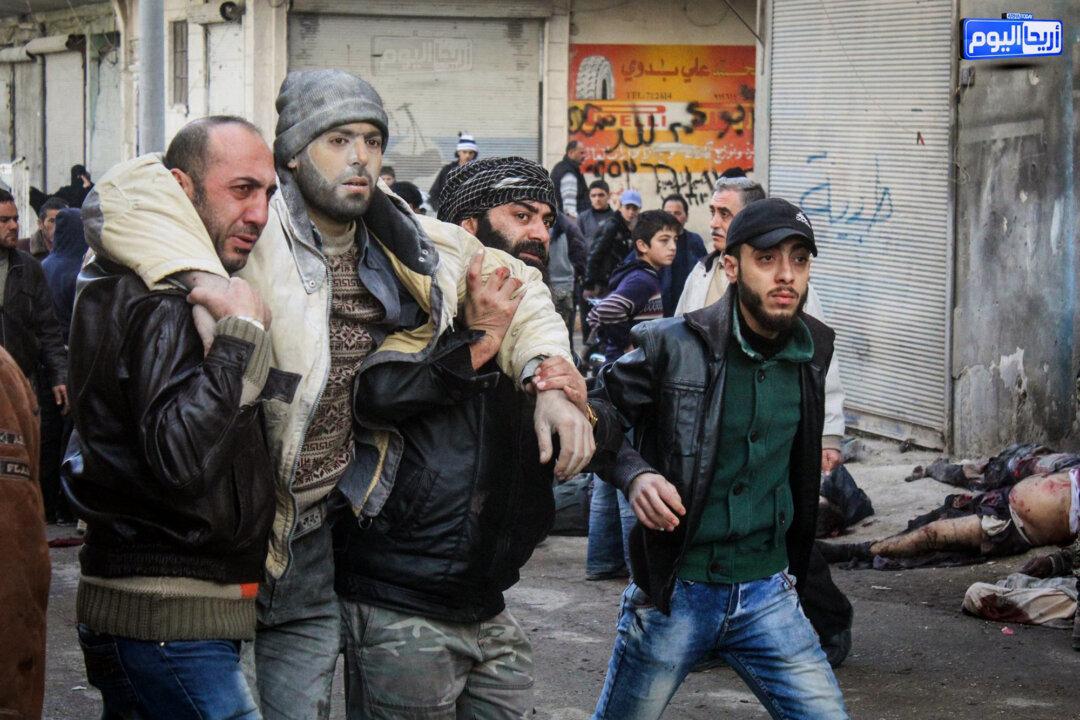BEIRUT—The three missiles fired on a public market in the northern Syrian town of Ariha took the morning shoppers by surprise. In a few moments, the main street, packed with people buying and selling fruit and vegetables, turned into a scene of carnage with burning cars and the wounded screaming in terror.
At least 34 civilians were killed in the Nov. 29 attack—one in a growing number of suspected Russian attacks that Syrian opposition and rights activists say have killed civilians and caused massive destruction to residential areas across the country since Moscow formally joined the conflict nearly three months ago.
Russian officials have repeatedly rejected the accusations while residents and most opposition activists inside Syria acknowledge they have no way of categorically distinguishing whether planes that carry out a specific attack are operated by Russians or Syrians.
War Crimes?
But human rights groups say the pattern of attacks suggests Russia is flouting international humanitarian law and that it may even amount to war crimes.
In a new report released Wednesday, Dec. 23, Amnesty International says it has also documented evidence suggesting that Russia used cluster munitions and unguided bombs in populated residential areas. The London-based watchdog denounced Moscow’s “shameful failure” to acknowledge civilian killings.






